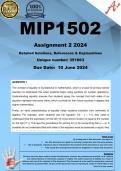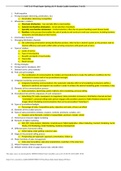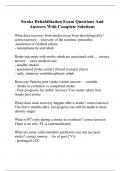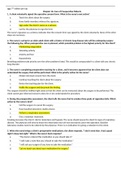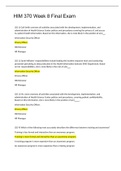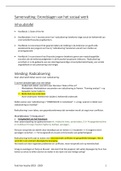Prüfung
MIP1502 Assignment 2 (COMPLETE ANSWERS) 2024 (351863) - DUE 10 June 2024
- Kurs
- Hochschule
- Book
MIP1502 Assignment 2 (COMPLETE ANSWERS) 2024 (351863) - DUE 10 June 2024;100% TRUSTED workings, explanations and solutions. for assistance Whats-App.......0.6.7..1.7.1..1.7.3.9......... Question 1 1.1 Discuss why mathematics teachers in primary school must be concerned with the concept of equalit...
[ Mehr anzeigen ]
